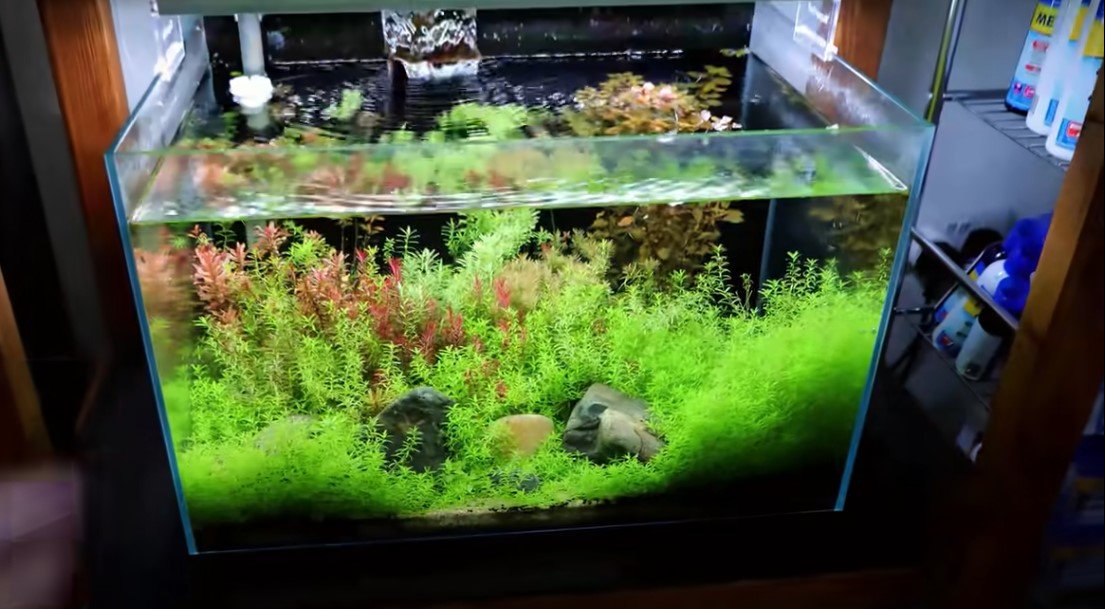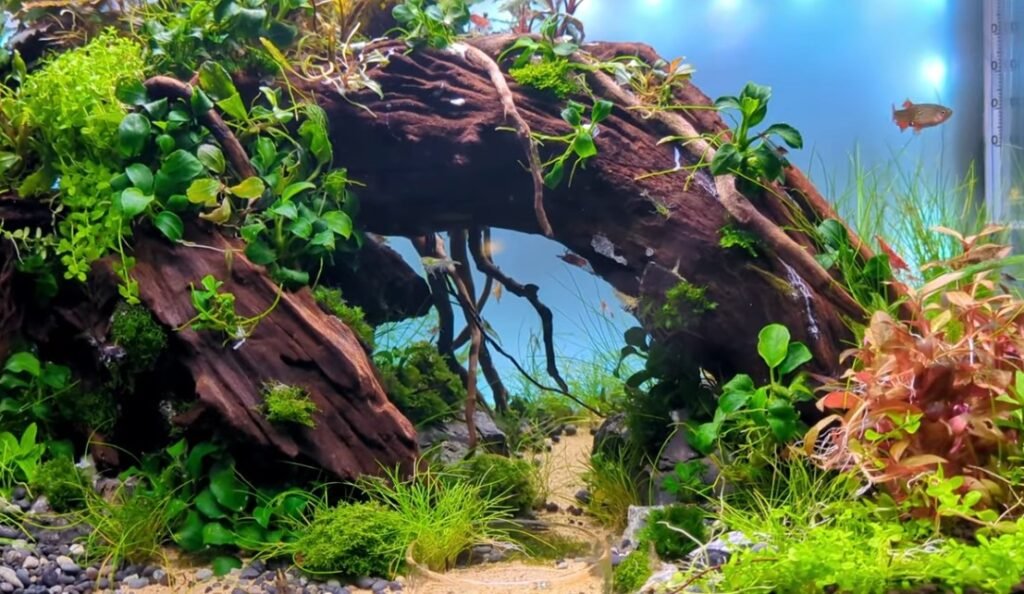To keep a fish bowl clean without a filter, you must avoid overfeeding the fish and change 30% water every two days. As per my research, fish owners also add live plants to maintain cleanliness. Besides, you need to clean the bowl pretty often.

Cleaning a fish bowl to keep the water fresh can be challenging if you do not follow the proper steps. Because rinsing sometimes does not kill the algae and germs. So, tag along for the process that keeps the water clean and tidy!
Is A Filter Necessary For A Clean Fish Bowl?
Fish bowls with two to three aquatic pets or fish do not need a filtration system for clean water. Also, if the bowl is spacious enough to hold more than 3-gallon water, a filter is not necessary.
However, upon regular maintenance, you will need to keep the water fresh. Only then the fish will thrive in the water. Or else they can gasp for oxygen without filters and manual maintenance. Because dirty water eventually lowers the oxygen level.
How Long Can Fish Survive Without Filter In A Fish Bowl?
Usually, all types of fish can go on for 3 to 7 days without filtered water. But it depends on the size of the bowl and the health of the fish. If they are not suffering from swim bladder disease and the bowl is 3-gallon-sized, a non-filtered bowl can be suitable for them.
Some fish species have stress resistance, hence, they adapt to captive environments easily. And they can survive their entire lifespan in the bowl without a filter.
Which Fish Do Not Require a Filter In Their Fish Bowl?
As I mentioned, there are some fish species suitable for filterless bowls. Consider placing these fish in a no-filter situation for risk-free fish keeping –
Hardy Fish
Hardy fish can withstand varying water conditions. Therefore, if the water level drops, they tend to adapt to their surroundings quickly. It is possible because they have improved immune and breathing systems.
All types of Goldfish, Guppies, and Neon Tetra are hardy enough to fit in a filter-less bowl. But let me remind you that you will need to keep the water pH according to their needs to prevent hazardous situations.
Coldwater and Small Fish
Coldwater fish require water temperatures between 18 to 23° C to grow. As long as the temperature is within their tolerance, they do not need any additional filtration to live.
Also, as small fish have smaller stomachs, they do not eat that much. As a result, they do not produce much organic waste. It keeps the water poison free and safe.
Rainbow shiners, Clown Killifish, and Cherry Shrimps are some small fishes. I’d suggest asking the local aquarium and pet stores to buy the cold water fish.
How to Keep a Fish Bowl Clean Without a Filter?
A fish bowl without a filter can easily get dirty, especially when its water quality drops by not keeping it clean. And to keep the habitat safe and tidy manually, I’d highly recommend following these tried and tested methods:

Do Not Overfeed the Fish
I have noticed some fish keepers who overfeed their fish, which have a bigger appetite. This means that the fish will produce more organic waste than usual. Also, the uneaten food piles up in the bowl.
Gradually, the food and waste produce toxic ammonia in the bowl. Hence, the water becomes poisonous to the fish.
So, to keep the water fresh, avoid supplying food more than the fish can consume at a time. Also, do not let live foods such as worms and insects sit in the bowl for longer, as they can rot and pollute the water!
Frequent Water Change
Fish bowls can hold a little amount of water. In such a low quantity of liquid, harmful ammonia, and nitrite levels go up faster. So, you will need to perform a water change every two days. As massive water-alter can stress the fish, consider changing 30 to 40% of the total water.
Adding fresh water every day dilutes the lethal compounds in the water. Therefore, no chemical substances can sit too long in the bowl to contaminate the water.
Keep the Decors Clean
The gravel, rocks, or decorations inside your fish bowl can trap waste. So, you should remove them from the water and rinse off the stored dirt once a week. Before placing the back inside, you must disinfect them with disinfectants.
These objects can form algae if not cleaned for an extended time. If you do not want to clean them often, accommodate a snail inside the bowl, ask why? Because that will eat the algae and make the water fresh.
Place Live Plants
Live aquatic plants can assist in preventing water pollution. Indeed, these organic plants reduce the nitrite or ammonia from the water.
Also, plants soak up the nutrients required for algae growth. So, even if there are algae in the bowl, they will starve to death due to lack of nourishment.
How to Clean a Fish Bowl without Filter?
No matter how many tricks and tips you apply to keep a fish bowl clean, it will get dirty over time. So, follow the cleansing process below to make the bowl and water safe for the fish:
- With a net, catch the fish from the bowl and place them in a bucket full of fresh water.
- Then, dump the dirty fish bowl water in the sink.
- Remove all the decorations and scrub them with a soft bristle brush.
- Now, pour disinfectant over the decors and rub the objects gently using your hand.
- Rinse off the objects with fresh water to remove algae and dirt.
- Run tap water over the fish bowl and repeat the step for several minutes.
- Then, take a sponge scrub and rub the sides of the bowl with soap liquid.
- Make sure you scrub the bowl inside out.
- Wash the bowl off with clean water.
- Put the decorations back into the bowl and add fresh water to it.
- With an Aquarium test or pH kit, measure the pH level of the water.
- If the kit shows pH ideal for your fish, only then, you can add the fish back to the bowl.
Which One Is Better: Filtered Or No-Filtered Fish Bowl?
If you are getting started with your fish bowl, it might get a bit difficult to decide between filter or no-filter options. But once you note down your preferences and fish requirements, it will be an easy call!
In order to illustrate, if you do not prefer manual water changes frequently, you can install a filtration system. In contrast, if you can pull up the regular maintenance, the water will remain clean for longer without the help of a filter.
And the maintenance includes cleaning the objects, avoiding overfeeding, and adding fresh water once in a while.
Also, if you have small fish in limited numbers, they will not add much to the water contamination. Here, I see no use of a filter.
Conclusion
Once you get the basics of keeping a fish bowl clean without a filter, you will no longer invest bucks in a filtration system. And it not only fits in your budget but also takes away the worry of maintaining the filter.
If you are not up for a filter, I advise you to explore fish species that have smaller appetites. They do not produce much waste, and it keeps the water fresh for longer.